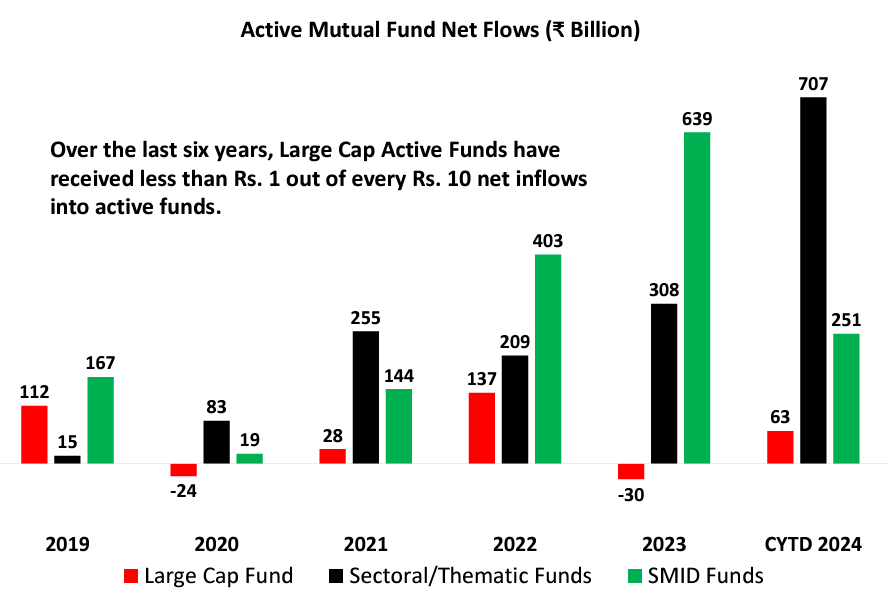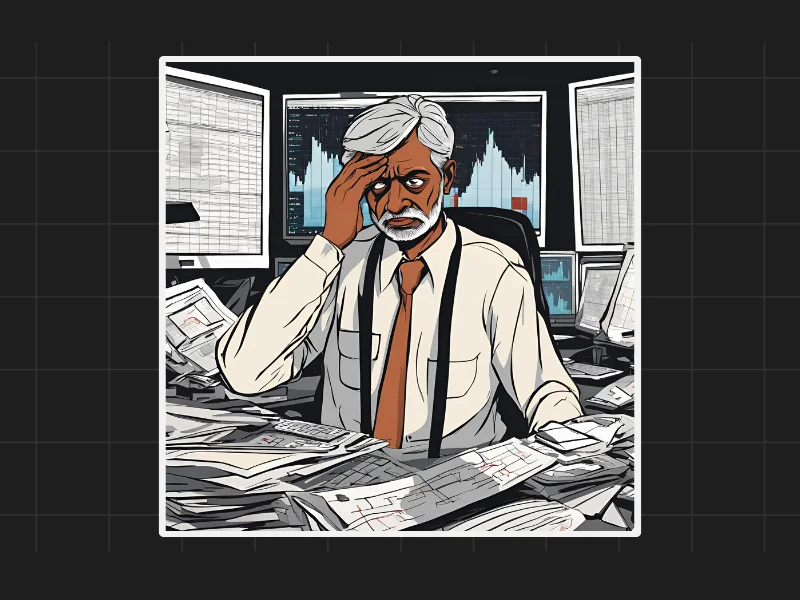A Shift in Investor Focus?
In recent years, mutual fund investments have shown a significant shift in where the money is flowing. Over the last six years, especially during a period where the market has been largely bullish, it seems that large-cap active mutual funds have not been receiving as much investor attention. In fact, for every ₹10 that has flowed into active mutual funds, less than ₹1 has gone into large-cap funds. This imbalance raises important questions about investor behavior and future market trends.

Sectoral and Thematic Funds Gain Popularity
One striking trend is the increasing popularity of sectoral and thematic funds. These are funds that focus on specific sectors like defense or renewable energy. While these types of funds may seem appealing due to their high returns in the short term, they also come with higher risks. If a sector underperforms for an extended period, investors in these funds could face losses.
A key reason for the growth in sectoral funds can be traced back to the incentives for distributors. These funds often carry higher fees for distributors, making them an attractive option to push to investors. Unfortunately, many investors may not fully understand the risks involved with being so narrowly focused on one sector.
Mid and Small-Cap Funds are Attracting Attention
In addition to sectoral funds, small-cap and mid-cap funds have also been pulling in a lot of money. This makes sense, as the prices of small and mid-cap stocks have seen significant increases recently. Investors, particularly retail investors, often get swayed by the performance of these funds in the last year and make decisions based on this short-term view.
This focus on smaller companies might seem logical when these stocks are performing well, but it comes with its own risks. Smaller companies can be more volatile, and their performance can fluctuate more than that of large-cap companies, which are typically more stable.
Large Caps Losing Out !
What’s interesting is that large-cap funds, which traditionally represent more stable, well-established companies, are not getting a significant portion of new investments. In fact, in 2023, there was an outflow from large-cap funds, and while there has been some inflow in 2024, it has been modest compared to other categories.
This shift away from large-cap funds could be seen as an alarming trend. Large-cap stocks tend to be less risky than their smaller counterparts, and for long-term investors, they have often been a cornerstone of a stable investment portfolio.
A Possible Shift in the Future?
Looking at these trends from a contrarian point of view, this could mean that large-cap funds may be due for a comeback. As the money flows heavily into small and mid-cap funds, we could see a reversal in the coming years, where large-cap stocks begin to outperform.
This would naturally lead to more inflows into large-cap funds, as investors react to changes in performance. Investors who take a long-term view might want to consider the potential for large caps to regain their appeal in the coming years.
Disclaimers and disclosures : https://tinyurl.com/2763eyaz
If you have any questions, please write to support@weekendinvesting.com













